Mushroom growing kits have transformed home cultivation from an intimidating, specialist pursuit into an accessible hobby anyone can enjoy. Whether you're drawn to the health benefits of functional mushrooms, the environmental advantages of sustainable food production, or simply the satisfaction of growing your own gourmet ingredients, mushroom kits offer compelling benefits that extend far beyond the dinner table.
This comprehensive guide explores ten powerful reasons why mushroom growing kits represent one of the best investments you can make for your health, wallet, and the planet. From dramatic cost savings to environmental sustainability, from nutritional superiority to educational value, you'll discover why thousands of people are bringing mushroom cultivation into their homes.
Ready to learn why mushroom growing kits might be the perfect addition to your lifestyle? Let's explore the remarkable benefits that make these kits so valuable.
1. Unmatched Convenience: From Box to Harvest in Days
The convenience factor of mushroom growing kits cannot be overstated. Traditional mushroom cultivation requires specialized knowledge, sterile laboratory conditions, pressure cookers for sterilization, and weeks of preparation before you even begin the growing phase.
Skip the Complex Preparation
Mushroom kits arrive with substrates already fully colonized by healthy mycelium. This means all the difficult, time-consuming steps—substrate preparation, sterilization, inoculation, and colonization—have been completed for you in professional facilities with proper equipment and expertise.
You simply unbox your kit, place it in an appropriate location, provide basic care (misting for traditional kits or just adding water for automated systems), and watch mushrooms appear within 7-14 days. It's as simple as opening scissors and spraying water—no special skills required.
Perfect for Busy Lifestyles
Modern life doesn't leave much time for complex hobbies. Mushroom kits respect your schedule. Traditional manual kits require just 5 minutes twice daily for misting. Smart automated systems like the LYKYN Smart Mushroom Grow Kit reduce this to virtually zero daily maintenance—just refill the water reservoir every few days and monitor progress through the app.
This convenience makes mushroom growing accessible to working professionals, parents, students, and anyone with limited time who still wants to grow their own fresh food.
No Special Equipment Needed
Unlike starting from scratch, which requires pressure cookers, flow hoods, sterilization equipment, and dedicated growing spaces, mushroom kits need only:
- A spray bottle (for manual kits) or nothing extra (for automated systems)
- A location with indirect light
- Room temperature conditions (60-75°F)
Your kitchen counter becomes a mushroom farm without any special infrastructure or equipment investments.

2. Significant Cost Savings: Grow Premium Mushrooms for Pennies
The financial benefits of mushroom growing kits become apparent quickly, especially if you regularly purchase fresh mushrooms or functional mushroom supplements.
Store-Bought vs. Home-Grown Cost Analysis
Fresh gourmet mushrooms like shiitake, oyster, and Lion's Mane typically cost $12-20 per pound at grocery stores and farmers markets. Functional mushroom supplements (dried, powdered, or extracted) command even higher prices—often $30-60 per month for quality products.
A typical mushroom growing kit costs $25-40 and produces 1.5-3 pounds of fresh mushrooms across 2-4 flushes. This translates to approximately $8-15 per pound of fresh, premium mushrooms—a 40-60% savings compared to retail prices.
Example Cost Breakdown:
Traditional Store Buying (Monthly):
- 2 lbs fresh oyster mushrooms @ $16/lb = $32
- Annual cost = $384
Kit Growing (Monthly):
- 1 kit @ $35 producing 2.5 lbs = $14/lb
- Annual cost = $168
- Annual savings: $216
For functional mushrooms like Lion's Mane taken as supplements, the savings amplify even further. Growing your own Lion's Mane and preparing it as tea or tincture costs a fraction of commercial supplements. Learn more about preparation methods in our Lion's Mane tincture recipe guide.
Multiple Harvests Maximize Value
Quality kits produce 2-4 flushes (harvest cycles) from a single substrate block. After harvesting your first flush, simple rehydration techniques trigger additional growth cycles. This multi-harvest capability means you're not paying $35 for one harvest—you're paying for multiple pounds of mushrooms over weeks or months.
Long-Term Equipment Reusability
If you invest in a smart automated system like the LYKYN chamber, the equipment lasts for years. You only need to purchase new substrate blocks (typically $15-25 each) for subsequent grows, while the chamber, sensors, humidifier, and fans continue functioning indefinitely with basic maintenance.
Over time, the cost per pound decreases dramatically as you reuse equipment and develop more efficient growing practices.
3. Superior Health Benefits: Fresh, Chemical-Free Nutrition
Mushrooms grown at home offer nutritional advantages that store-bought varieties simply cannot match.
Peak Freshness Equals Maximum Nutrition
Mushrooms begin losing nutritional value the moment they're harvested. Store-bought mushrooms may sit in distribution centers, trucks, and store shelves for days or weeks before purchase, steadily degrading in nutritional content.
Home-grown mushrooms go from your growing kit to your plate within hours, preserving maximum levels of:
- B vitamins (thiamine, riboflavin, niacin, pantothenic acid)
- Vitamin D (especially when exposed to sunlight after harvest)
- Antioxidants (ergothioneine and glutathione)
- Beta-glucans (immune-supporting polysaccharides)
- Minerals (selenium, copper, potassium)
Research shows that oyster mushrooms contain five times more beta-D-glucan than button mushrooms, and pink oysters lead the pack with the highest concentrations. These powerful compounds support immune function, promote healthy gut microbiomes, and may help lower cholesterol and blood pressure.
Zero Pesticides, Herbicides, or Chemicals
When you grow mushrooms at home, you control every input. You know exactly what goes into your growing substrate—no mystery chemicals, pesticides, or treatments that commercial operations might use.
This complete transparency ensures you're consuming the cleanest, most natural mushrooms possible. This matters especially for functional mushrooms like Lion's Mane and turkey tail that you might consume regularly for health benefits.
Access to Medicinal Varieties
Many functional mushrooms with significant health properties—Lion's Mane for cognitive function, turkey tail for immune support, reishi for stress management—are rarely available fresh at stores and command premium prices dried.
Growing kits give you affordable access to these medicinal varieties. You can harvest them fresh, dry them for long-term storage, or prepare them as teas and tinctures for maximum bioavailability. Our guide on preparing turkey tail mushrooms shows various methods for getting the most from medicinal varieties.
Immune System Support
Mushrooms contain unique compounds that activate and support immune function. Beta-glucans found in mushroom cell walls help train immune systems to respond more effectively to threats. Regular consumption of home-grown mushrooms may contribute to:
- Enhanced immune response
- Reduced inflammation
- Better gut health (mushrooms feed beneficial gut bacteria)
- Improved metabolic function

4. Environmental Sustainability: Growing Food Responsibly
Mushroom cultivation through home growing kits represents one of the most environmentally friendly food production methods available.
Minimal Carbon Footprint
Commercial mushroom production—while relatively efficient—still involves machinery, transportation across long distances, refrigerated storage, and plastic packaging. Each pound of store-bought mushrooms carries the carbon cost of this entire supply chain.
Studies show that producing one pound of mushrooms generates just 0.7 pounds of CO2 equivalents—already among the lowest carbon footprints of any food. By growing at home, you eliminate transportation and packaging, reducing this footprint even further.
For perspective, mushrooms produce:
- 0.5 kg CO2 per pound (home-grown is even less)
- Chicken: 3.1 kg CO2 per pound
- Pork: 5.5 kg CO2 per pound
- Salmon: 5.4 kg CO2 per pound
- Beef: 27 kg CO2 per pound
Replacing just a few meat-based meals weekly with home-grown mushrooms significantly reduces your dietary carbon footprint.
Incredible Resource Efficiency
Mushroom cultivation uses remarkably little water and energy:
- Water: Less than 2 gallons per pound (compared to 50+ gallons for most produce)
- Energy: 1 kilowatt-hour per pound (same as running a coffee maker for one hour)
- Space: One square foot produces 6.55 pounds of mushrooms
This efficiency makes mushroom growing ideal for urban environments and small spaces. You're producing substantial amounts of food using minimal resources.
Waste Recycling and Circular Agriculture
Mushroom substrates consist of agricultural waste products—sawdust, straw, wood chips, and supplemented materials that would otherwise be discarded or burned. Growing mushrooms transforms these low-value waste materials into high-quality, nutritious food.
After your substrate exhausts its nutrients (typically after 2-4 harvests), the spent block becomes excellent garden compost. The mycelium has broken down the substrate into rich, nutrient-dense material perfect for vegetable gardens and houseplants.
This represents true circular agriculture: waste becomes food, food waste becomes soil amendment, soil supports more plant growth.
Reduced Packaging Waste
Store-bought mushrooms come in plastic containers, overwrapped in plastic film, contributing to landfill waste. Growing at home eliminates all packaging waste. You harvest directly into reusable containers and store in paper bags—zero plastic waste generated.
Supporting Biodiversity
While this might seem abstract, growing mushrooms connects you with the fascinating kingdom of fungi that plays crucial roles in ecosystem health. Understanding mushrooms—even through simple home cultivation—fosters appreciation for these organisms that decompose organic matter, create soil, form symbiotic relationships with plants, and support forest health.
5. Educational Value: Learning Through Hands-On Experience
Mushroom growing kits provide exceptional educational opportunities for all ages, turning abstract biology concepts into observable, tangible experiences.
Understanding Life Cycles
Watching mushrooms develop from invisible mycelium to pinheads to full fruiting bodies teaches fundamental concepts about life cycles, reproduction, and fungal biology. Children especially benefit from this visible, rapid transformation—mushrooms double in size every 24 hours during peak growth!
This experiential learning makes mushroom kits valuable educational tools for:
- Homeschooling families teaching biology
- Classrooms demonstrating decomposition and nutrient cycling
- Science fair projects exploring environmental conditions and growth
- Anyone curious about mycology and the fungal kingdom
Developing Growing Skills
Successfully cultivating mushrooms builds transferable skills applicable to broader gardening and food production:
- Environmental monitoring: Understanding how temperature and humidity affect growth
- Observation skills: Recognizing health indicators and identifying problems early
- Troubleshooting ability: Diagnosing issues and implementing solutions
- Patience and consistency: Maintaining daily routines for best results
These skills translate well to vegetable gardening, houseplant care, and other cultivation hobbies.
Gateway to Mycology
Many people who start with simple mushroom kits develop lasting interests in mycology—the study of fungi. This can lead to:
- Foraging for wild mushrooms (with proper education and identification skills)
- More advanced cultivation techniques
- Understanding mushroom ecology and environmental roles
- Appreciation for fungal diversity and importance
The beginner's guide to mushroom growing kits on our blog provides deeper educational content for those wanting to expand their knowledge.
Family Bonding Activity
Mushroom growing creates shared family experiences. Children love checking the kit daily for new growth, measuring mushroom size, and participating in harvests. Parents appreciate the educational value combined with producing food together.
This hands-on activity provides screen-free time, teaches responsibility (someone must mist the kit daily), and culminates in a tangible reward—delicious mushrooms for family meals.
6. Complete Quality Control: Know Exactly What You're Eating
Growing your own mushrooms provides transparency impossible with store-bought varieties.
Full Traceability
When you purchase mushrooms from stores, you rarely know:
- Where they were grown
- What substrates were used
- What chemicals (if any) were applied
- How long ago they were harvested
- How they were transported and stored
With home-grown mushrooms, you control every aspect of production. You know your mushrooms are:
- Grown on clean, organic substrates
- Free from pesticides and chemical treatments
- Freshly harvested at peak maturity
- Handled with clean hands and proper care
This traceability matters especially for people with sensitivities, allergies, or specific dietary requirements.
Substrate Quality Assurance
Reputable mushroom kit suppliers use certified organic substrates and maintain strict quality controls. When you purchase from established companies, you're getting:
- Properly sterilized growing media
- Pure mushroom cultures (no contamination)
- Tested substrate formulations optimized for yields
The LYKYN system, for example, works with premium substrate blocks designed specifically for optimal performance with automated environmental controls.
Harvest Timing Control
Commercial growers often harvest mushrooms slightly early to extend shelf life during transportation and storage. This means store-bought mushrooms may not reach their peak flavor or nutritional potential.
When growing at home, you harvest at precisely the right moment—when caps are fully expanded but before they begin releasing spores. This timing captures mushrooms at their absolute peak of flavor, texture, and nutritional density.
Understanding mushroom growth stages helps you optimize harvest timing for different species.
Safety Through Control
Mushroom identification concerns disappear when growing from kits—you know exactly which species you're cultivating because it came clearly labeled from a reputable supplier. This eliminates any risk of accidentally harvesting something unsafe, a concern when foraging wild mushrooms.
7. Year-Round Availability: Fresh Mushrooms Anytime
Unlike outdoor gardening constrained by seasons and weather, indoor mushroom cultivation produces fresh harvests twelve months per year.
No Seasonal Limitations
Traditional gardens lie dormant through winter months. Mushroom kits, grown in controlled indoor environments, thrive regardless of outdoor conditions. You can harvest fresh Lion's Mane mushrooms in January just as easily as July.
This year-round capability means:
- Consistent fresh mushroom supply regardless of season
- No dependence on farmer's market schedules
- Reliable access to functional mushrooms for health routines
- Ability to gift fresh mushrooms during any season
Weather Independence
Outdoor mushroom cultivation (like log inoculation) depends heavily on weather conditions—rainfall, temperature cycles, and seasonal changes trigger fruiting. These methods work beautifully but on nature's timeline, not yours.
Indoor kits respond to your schedule. Start a kit whenever you want fresh mushrooms, not when weather conditions permit.
Temperature Control Advantages
Most homes maintain temperatures ideal for common mushroom species (60-75°F) naturally through heating and cooling systems. This stable environment enables consistent growth without special equipment.
Automated systems like the LYKYN chamber further optimize conditions with precise humidity control and fresh air exchange, creating perfect growing conditions regardless of external weather.
Reliable Supplement Source
For people taking functional mushrooms like Lion's Mane or turkey tail for health benefits, year-round growing ensures consistent supply without depending on commercial supplement availability or dealing with stock shortages.
8. Access to Exotic Varieties: Grow What Stores Don't Stock
Grocery stores typically stock only the most common mushroom varieties—white buttons, portobellos, and occasionally shiitake or oysters. Mushroom growing kits unlock access to dozens of gourmet and medicinal varieties rarely available commercially.
Gourmet Culinary Varieties
Expand your cooking repertoire with exotic mushrooms that command premium prices (when you can even find them):
- Lion's Mane: Seafood-like texture, delicate flavor, rarely sold fresh
- Pioppino: Intense, nutty flavor with firm texture
- Maitake: Complex, earthy taste, "hen of the woods"
- King Trumpet: Meaty texture perfect for vegetarian dishes
- Chestnut: Rich, nutty flavor superior to button mushrooms
- Blue/Pink/Golden Oysters: Beautiful colors and unique flavors
Many of these varieties simply don't survive commercial distribution well due to short shelf life or fragile structure. Growing them yourself is often the only way to experience their exceptional flavors fresh.
Medicinal Functional Mushrooms
Access powerful functional mushrooms grown specifically for health benefits:
- Lion's Mane: Cognitive support and nerve health
- Turkey Tail: Immune system modulation
- Reishi: Stress management and sleep support
- Cordyceps: Energy and athletic performance
These varieties are available commercially only as expensive dried, powdered, or extracted supplements. Growing them fresh provides maximum potency at minimal cost.
Experimentation Opportunities
With the low cost and ease of mushroom kits, you can experiment with multiple varieties to discover your favorites. Try growing:
- Different oyster varieties to compare flavors and colors
- Both culinary and medicinal species
- Cool-season and warm-season varieties for year-round diversity
This experimentation is educational, fun, and helps you develop expertise in mushroom preferences and optimal growing conditions for different species.
Rotating Varieties
Many growers maintain a rotation of 2-3 kits at different stages, providing continuous variety:
- Week 1: Start oyster mushroom kit
- Week 2: Start Lion's Mane kit
- Week 3: Start shiitake kit
- Week 4: Harvest oysters, restart oyster kit
This rotation ensures you always have mushrooms at different growth stages and provides diverse flavors for cooking.
9. Space Efficiency: Produce Substantial Food in Minimal Space
Mushroom cultivation offers unmatched productivity per square foot, making it ideal for apartments, small homes, and urban environments.
Compact Footprint
Most mushroom growing kits occupy less than one square foot—roughly the size of a coffee maker. This compact footprint fits easily on:
- Kitchen counters
- Shelves in living rooms or offices
- Basement corners
- Unused bathroom counter space
The LYKYN Smart Mushroom Grow Kit measures approximately 12" x 12" x 14"—smaller than many houseplants while producing pounds of food.
Vertical Growing Potential
Unlike traditional gardens that require horizontal space, mushroom cultivation works vertically. You can:
- Stack multiple kits on shelving units
- Use vertical space in closets or pantries
- Create mushroom "walls" with proper mounting
This vertical efficiency means even tiny apartments can produce significant mushroom harvests without sacrificing living space.
Impressive Yield-to-Space Ratio
One square foot of mushroom-growing space can produce 6.55 pounds of mushrooms over multiple flushes—an astounding productivity ratio unmatched by any other food production method in comparable space.
Compare this to traditional gardening:
- Tomatoes: 10-20 lbs per 4 square feet
- Lettuce: 1 lb per square foot
- Mushrooms: 6+ lbs per square foot
The difference becomes even more dramatic when considering that mushroom cultivation happens indoors year-round while traditional gardens lie dormant for months.
No Soil Required
Mushroom cultivation doesn't need garden beds, raised planters, or outdoor space. This "soil-less" growing makes mushrooms perfect for:
- Renters without yards
- Urban apartments with no balconies
- Homes with poor soil or climate conditions
- Anyone who wants fresh food without traditional gardening
Multiple-Kit Systems
Because individual kits are so compact, you can easily run multiple kits simultaneously without crowding your space. Many dedicated growers maintain 4-6 kits in a single closet with basic humidity control, producing 15-30 pounds of mixed mushrooms monthly from just 6 square feet.
10. Fun and Rewarding: The Joy of Growing Food
Beyond practical benefits, mushroom growing provides genuine enjoyment and satisfaction that enriches daily life.
Rapid Gratification
Few hobbies provide results as quickly as mushroom cultivation. Within just 7-14 days of starting a kit, you see visible mushroom pins emerging. This rapid feedback creates excitement and maintains engagement—you're not waiting months to see if your efforts worked.
During peak growth, mushrooms literally double in size every 24 hours. Checking your kit morning and evening reveals dramatic, visible changes. This dynamic growth process captivates even people who usually don't enjoy gardening.
Sense of Accomplishment
Successfully growing your first flush of mushrooms creates genuine pride and accomplishment. You've produced real food through your efforts—food that looks, smells, and tastes better than anything from a store.
This accomplishment builds confidence to tackle more challenging varieties or scale up production. Many serious mushroom cultivators began with simple oyster mushroom kits and gradually expanded their operations.
Meditative, Calming Practice
The daily ritual of checking and caring for mushrooms provides a calming, meditative break from screen time and stress. These few minutes of hands-on interaction with living organisms creates mindfulness and presence.
Watching mushrooms grow reminds us to slow down and appreciate natural processes we often overlook in our fast-paced modern lives. This connection to nature provides mental health benefits beyond the nutritional value of the harvested mushrooms.
Conversation Starter
A mushroom growing kit on your kitchen counter becomes an instant conversation piece. Guests invariably ask about it, creating opportunities to share your growing experiences and even gift fresh mushrooms to friends and family.
This social aspect connects you with communities of mushroom enthusiasts online and locally. Many cities have mushroom growing clubs or mycology societies where growers share tips, swap cultures, and celebrate successful harvests together.
Gateway to Deeper Interests
For many people, a simple mushroom kit opens doors to fascinating related interests:
- Foraging for wild mushrooms (with proper training)
- Advanced cultivation techniques
- Gourmet cooking focused on mushroom preparations
- Natural medicine and functional mushroom benefits
- Environmental science and fungal ecology
These expanding interests often lead to lifelong hobbies or even career changes. The mushroom industry is growing rapidly, creating opportunities in cultivation, sales, education, and research for those passionate about fungi.
Making the Most of Your Mushroom Growing Benefits
To maximize these benefits, consider these strategic approaches:
Start Simple, Scale Gradually
Begin with beginner-friendly oyster mushrooms in a basic kit. This builds confidence and skills before attempting more challenging species or investing in expensive equipment. Once comfortable, expand to multiple kits or upgrade to automated systems.
Integrate Into Daily Routines
Place your kit in a location you pass frequently—kitchen counters near sinks work perfectly. This ensures you remember daily misting and creates opportunities to observe growth without making special trips.
Track Your Savings
Keep simple records of kit costs versus retail mushroom prices. Seeing actual numbers—$35 kit producing $80 worth of mushrooms—reinforces the economic value and justifies expanding your operation.
Share the Experience
Gift mushrooms to friends, involve children in harvesting, and share photos on social media. These social connections enhance enjoyment and create accountability that keeps you engaged with the hobby.
Explore Multiple Varieties
Try different species to discover favorites and understand varying growing requirements. This experimentation is educational and ensures you don't get bored growing only one variety.
Consider Automation
If you find yourself consistently growing mushrooms and wishing for less maintenance, invest in quality automated systems like the LYKYN Smart Mushroom Grow Kit. The convenience pays dividends through consistent results and minimal time investment.
Frequently Asked Questions About Mushroom Growing Kit Benefits
Are mushroom growing kits really worth the investment?
Yes, mushroom growing kits provide excellent value when you consider multiple factors beyond just cost. While entry-level kits cost $20-40, they produce 1.5-3 pounds of fresh gourmet mushrooms worth $50-80 at retail prices—a 60-90% savings. Beyond economics, kits offer benefits that don't appear on balance sheets: superior freshness and nutrition, zero pesticides, educational value, environmental benefits, and the satisfaction of growing your own food. For people taking functional mushroom supplements regularly, growing your own cuts supplement costs by 70-80% while providing fresher, more potent mushrooms.
How much money can I actually save by growing mushrooms at home?
Savings depend on your mushroom consumption patterns and which varieties you grow. Average calculations show that someone consuming 2 pounds of gourmet mushrooms monthly saves approximately $200-250 annually by growing from kits instead of buying from stores. For functional mushroom consumers, savings are even more dramatic. Quality Lion's Mane or turkey tail supplements cost $30-60 monthly ($360-720 annually). Growing these varieties costs about $100-150 annually in kit purchases—a savings of $250-570 per year. If you invest in reusable automated equipment, long-term costs decrease further as you only purchase substrate blocks ($15-25 each) for subsequent grows.
Do home-grown mushrooms really taste better than store-bought?
Absolutely. Freshness dramatically affects mushroom flavor, and home-grown mushrooms reach your plate within hours of harvest versus days or weeks for commercial varieties. This freshness preserves delicate flavors and textures that deteriorate during storage and transport. Additionally, you can grow exotic varieties rarely available commercially—Lion's Mane, king trumpets, pioppino—that offer superior flavors to common button mushrooms. You also control harvest timing, picking mushrooms at peak maturity rather than prematurely (which commercial growers do to extend shelf life). Many growers report that after tasting home-grown mushrooms, store-bought varieties seem bland and rubbery in comparison.
Can mushroom growing kits really help the environment?
Yes, mushroom cultivation through home growing kits represents one of the most sustainable food production methods available. Growing mushrooms at home eliminates transportation emissions, reduces packaging waste, conserves water (mushrooms need just 2 gallons per pound versus 50+ for most produce), and recycles agricultural waste materials (sawdust, straw) into nutritious food. Mushrooms produce only 0.5 kg CO2 per pound—far less than meat (beef: 27 kg, chicken: 3.1 kg per pound) or even many vegetables. Spent substrate becomes excellent compost, completing a circular waste cycle. Replacing just a few meat-based meals weekly with home-grown mushrooms significantly reduces your dietary carbon footprint while improving nutrition.
Are mushroom growing kits suitable for beginners with no experience?
Mushroom growing kits are specifically designed for beginners and require no prior experience. Quality kits include pre-colonized substrates (all the hard work done for you), clear photo-illustrated instructions, and everything needed to get started. Basic kits require only a spray bottle and finding a suitable location—no special equipment or expertise necessary. Success rates for beginner-friendly species like oyster mushrooms exceed 90% when simple care instructions are followed. Smart automated systems like the LYKYN chamber make success virtually guaranteed by maintaining optimal conditions automatically. If you can remember to mist a plant twice daily (or add water to a reservoir weekly for automated systems), you can successfully grow mushrooms. Many people find mushroom cultivation easier than houseplant care!
Key Takeaways: Why Mushroom Growing Kits Make Sense
Mushroom growing kits deliver remarkable value across multiple dimensions. They provide convenience that respects busy schedules, cost savings of 40-60% compared to buying fresh mushrooms, superior nutrition through maximum freshness and zero chemical inputs, and environmental benefits through sustainable, low-carbon food production.
Beyond practical advantages, mushroom cultivation offers educational opportunities for all ages, complete quality control over your food, year-round fresh harvests independent of seasons, access to exotic varieties unavailable commercially, incredible space efficiency perfect for urban living, and genuine enjoyment through rapid results and connection to natural processes.
Whether you're motivated primarily by health, economics, environmental consciousness, or simple curiosity, mushroom growing kits align with these values while delivering tangible benefits from your very first harvest.
Start Experiencing These Benefits Today
Ready to unlock all these advantages in your own home? The LYKYN Smart Mushroom Grow Kit makes experiencing these benefits effortless through complete automation, app-based controls, and elegant design suitable for any living space. No misting schedules, no contamination concerns, no guesswork—just consistently successful mushroom harvests with minimal time investment.
For those wanting to explore specific varieties, our comprehensive guides provide detailed cultivation advice:
- Lion's Mane mushroom cultivation for cognitive health benefits
- How to grow turkey tail mushrooms for immune support
- Beginner's guide to mushroom growing kits for first-time growers
Don't just read about these benefits—experience them firsthand. Order your first mushroom growing kit today and discover why thousands of people are bringing this sustainable, rewarding practice into their homes. Your first harvest awaits!
Featured Snippet Summary
Mushroom growing kits offer 10 major benefits: convenience (harvest in 7-14 days with minimal effort), cost savings (40-60% less than buying), superior health benefits (maximum freshness and zero pesticides), environmental sustainability (minimal carbon footprint and water use), educational value, complete quality control, year-round availability, access to exotic varieties, space efficiency (6+ pounds per square foot), and enjoyment. Kits eliminate complex cultivation steps while producing fresh, nutritious mushrooms for pennies per pound, making them ideal for health-conscious, environmentally aware consumers seeking sustainable food sources.

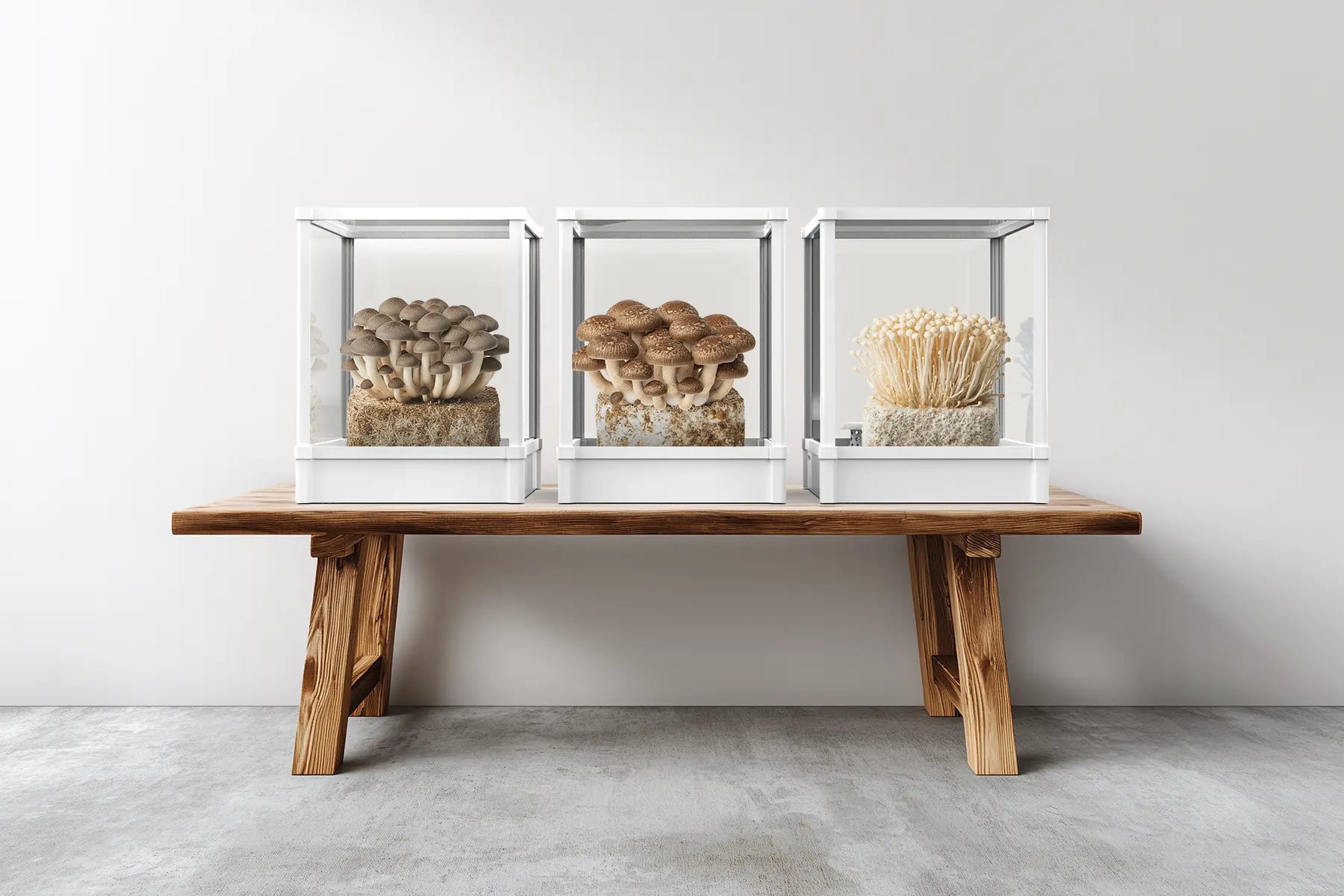




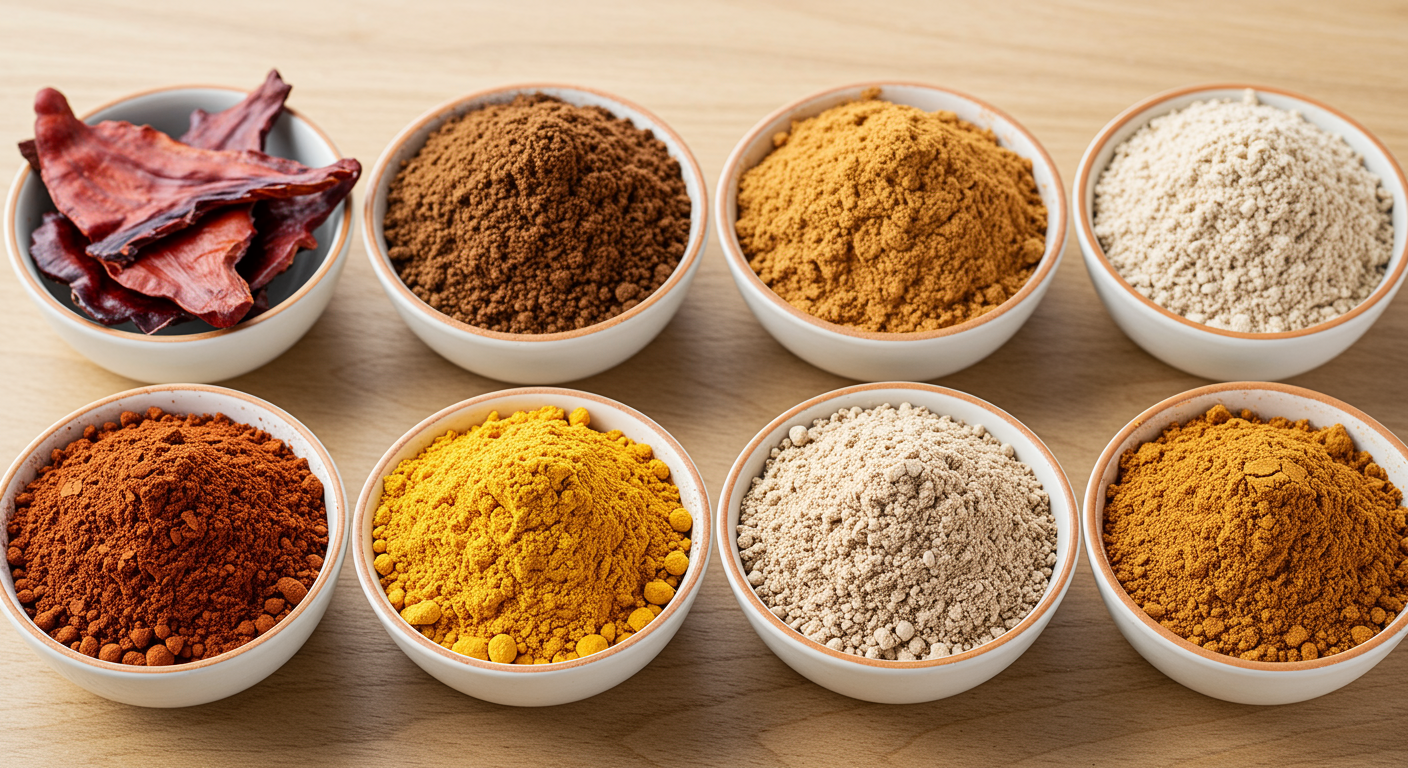

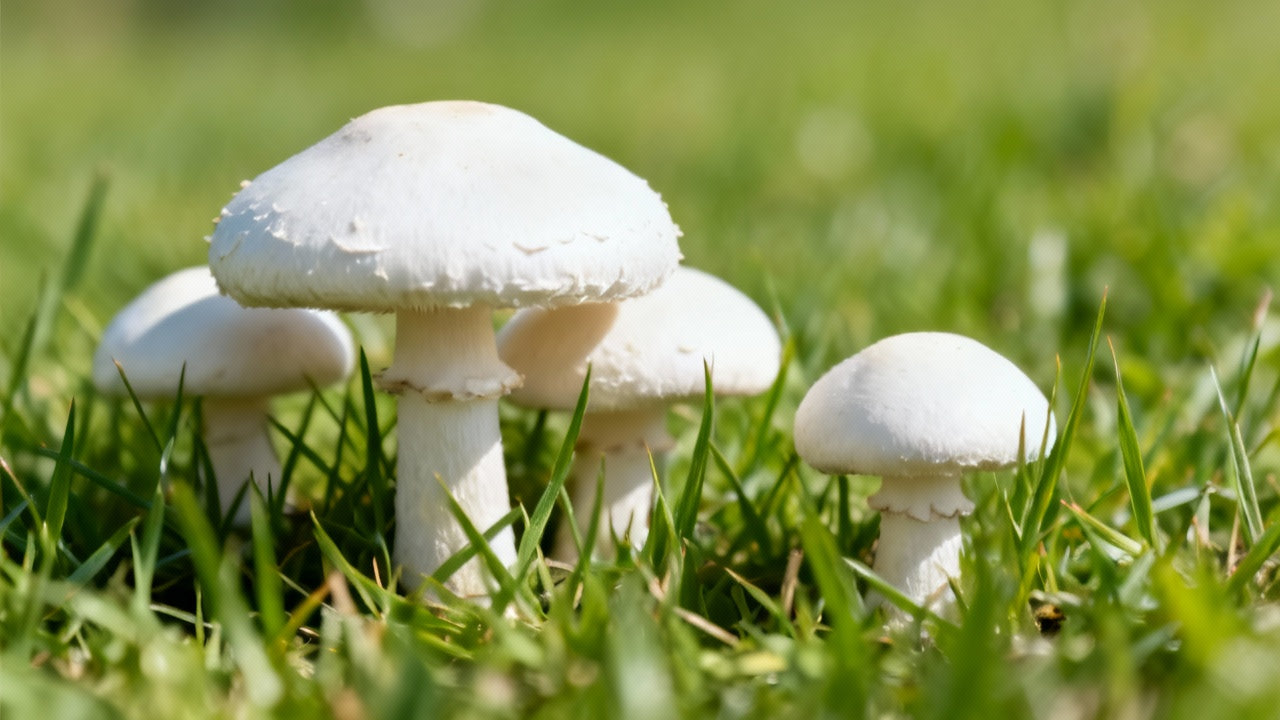
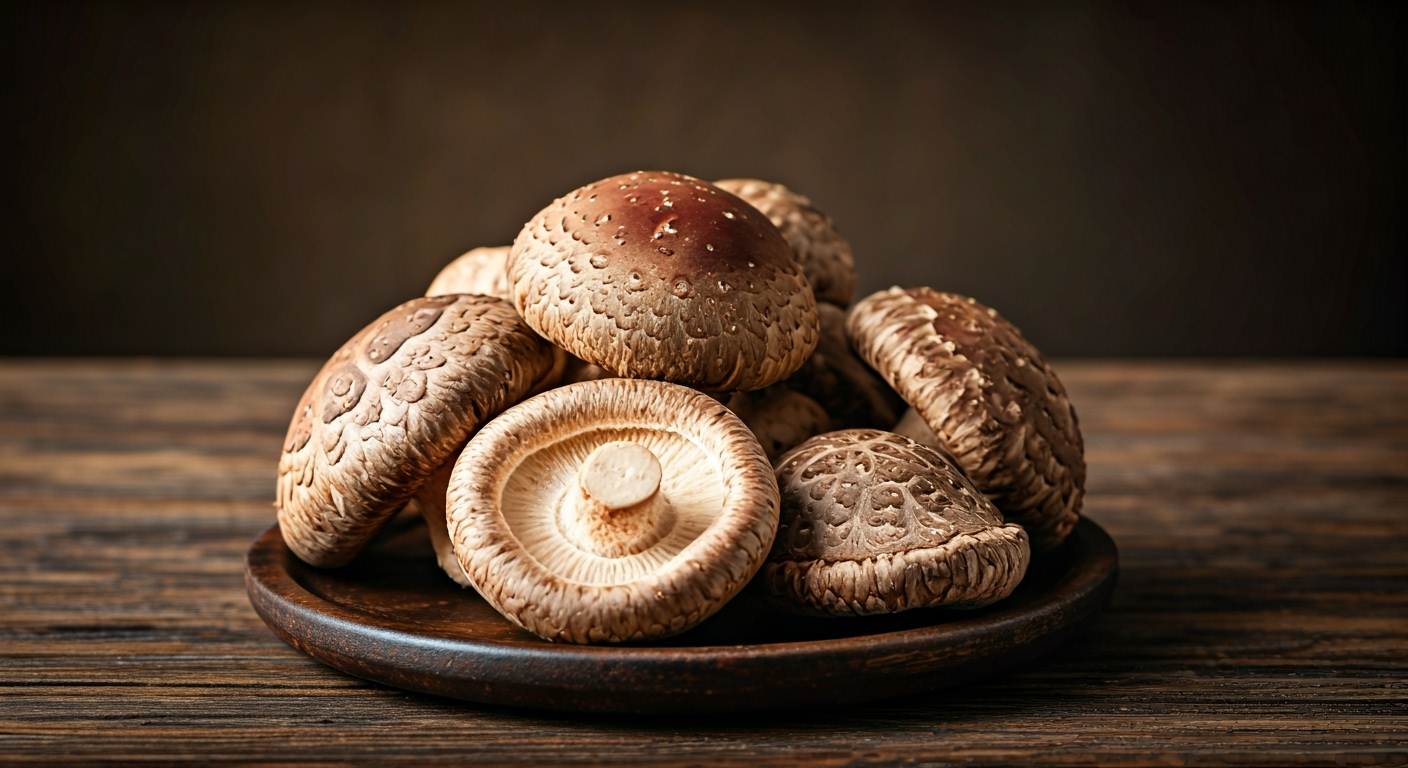
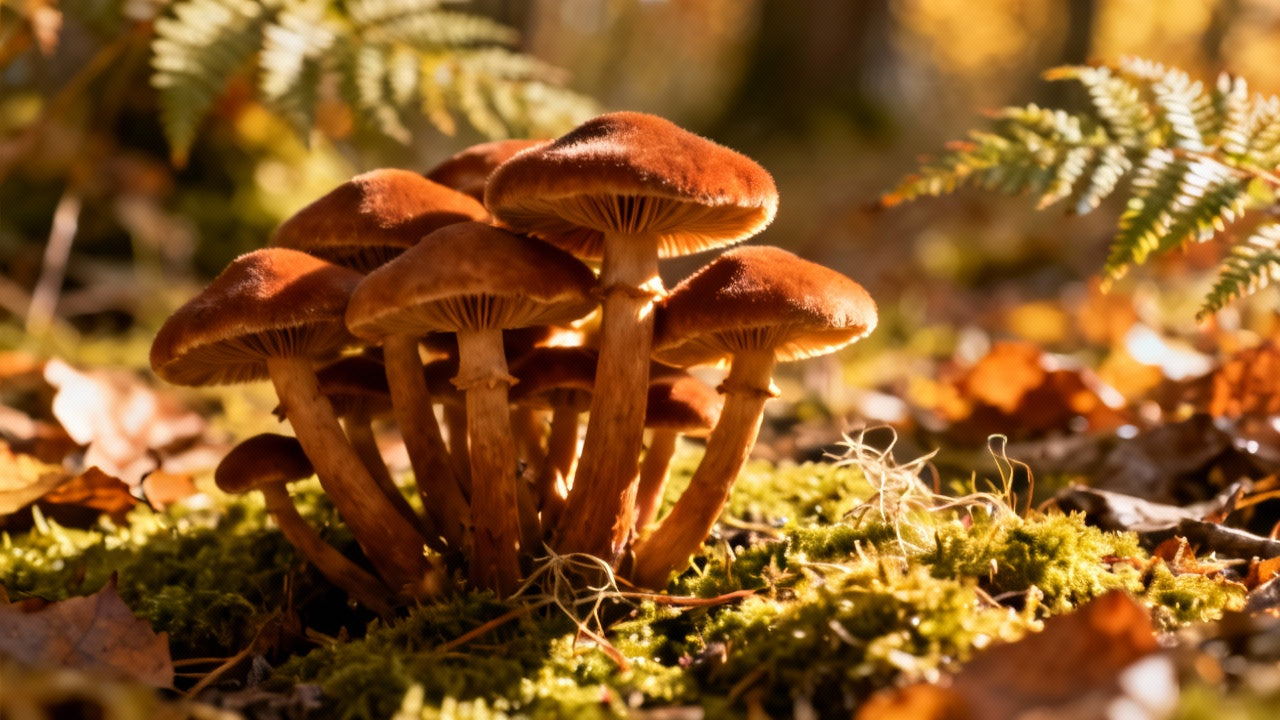
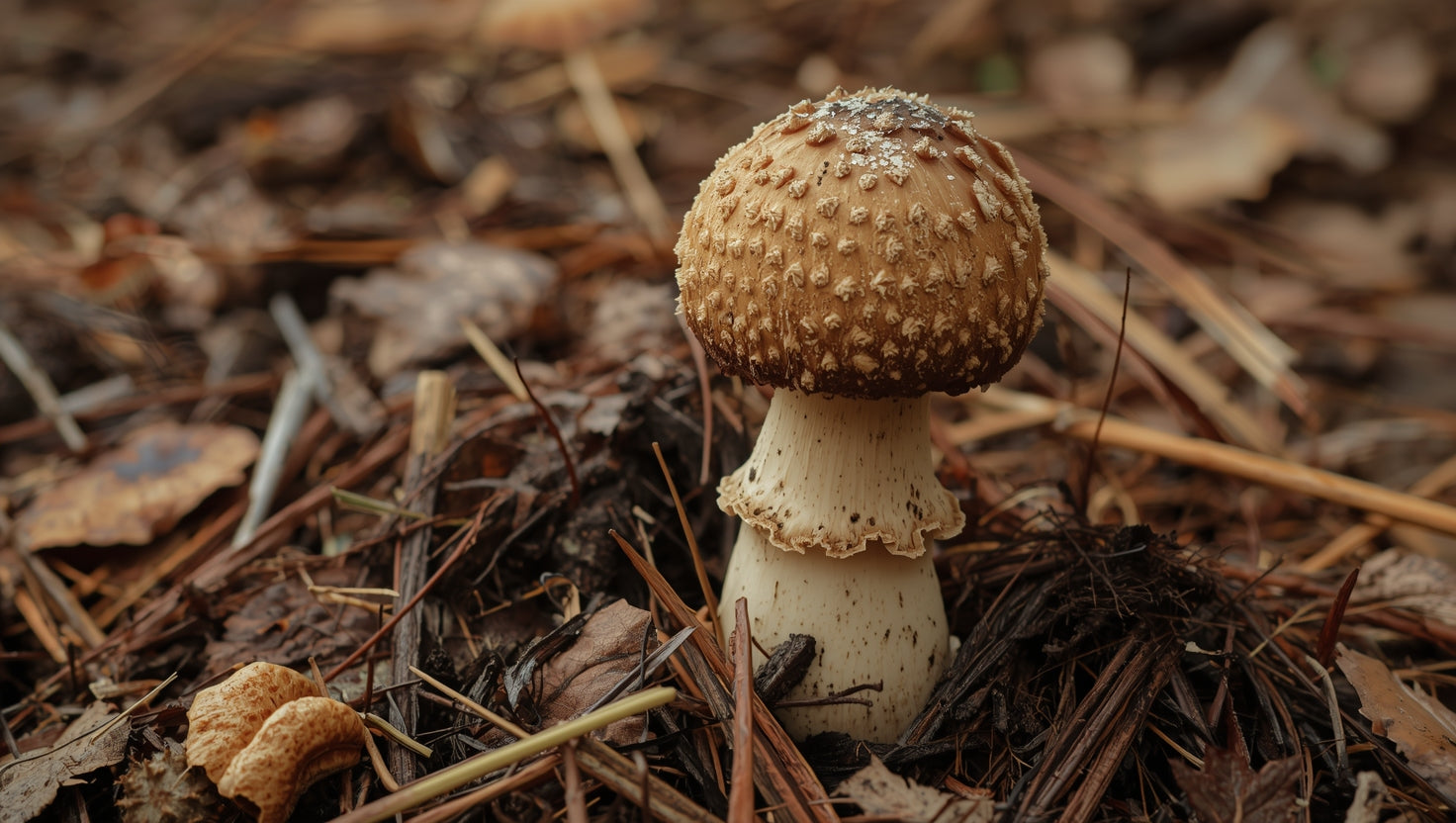
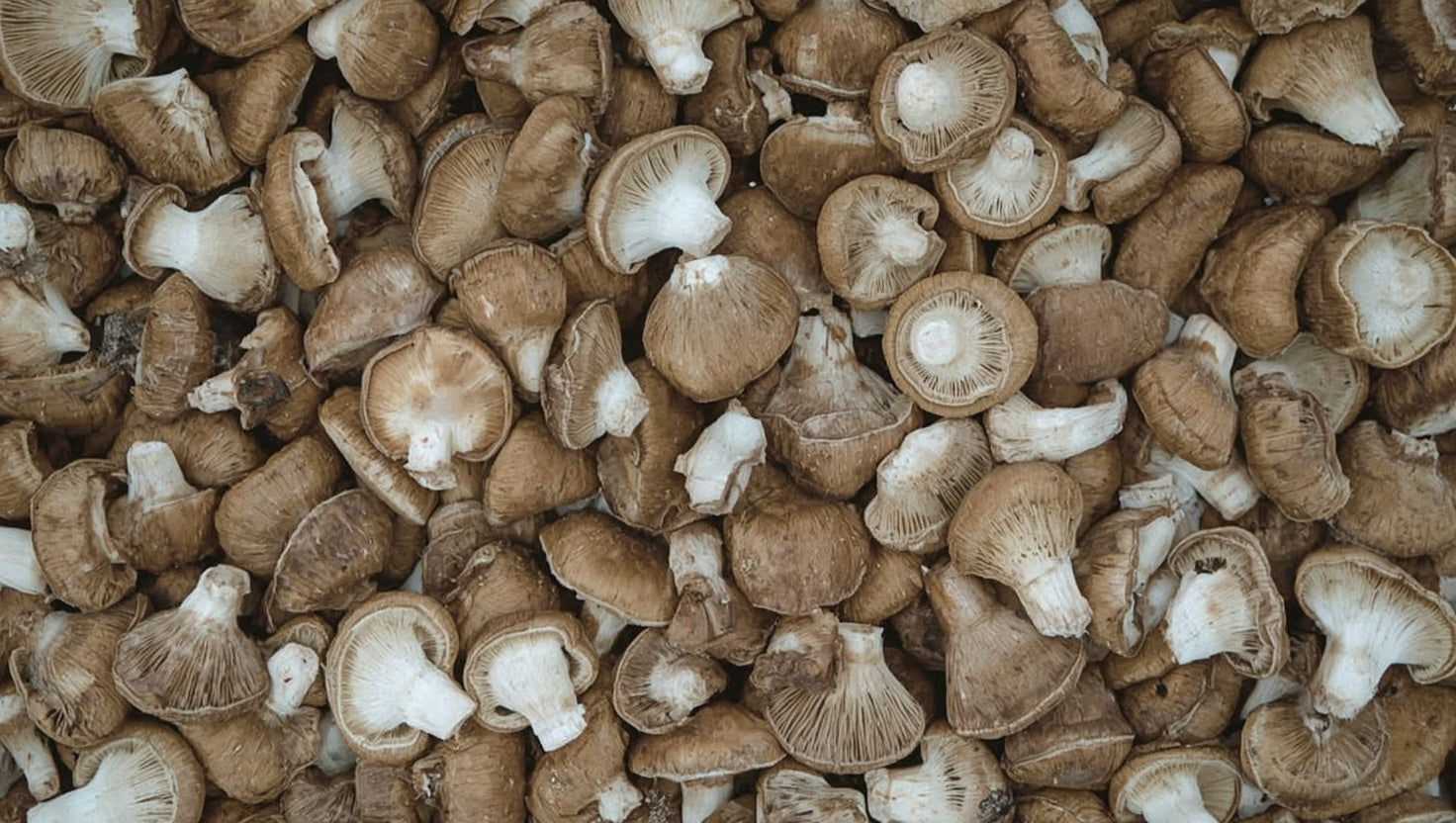
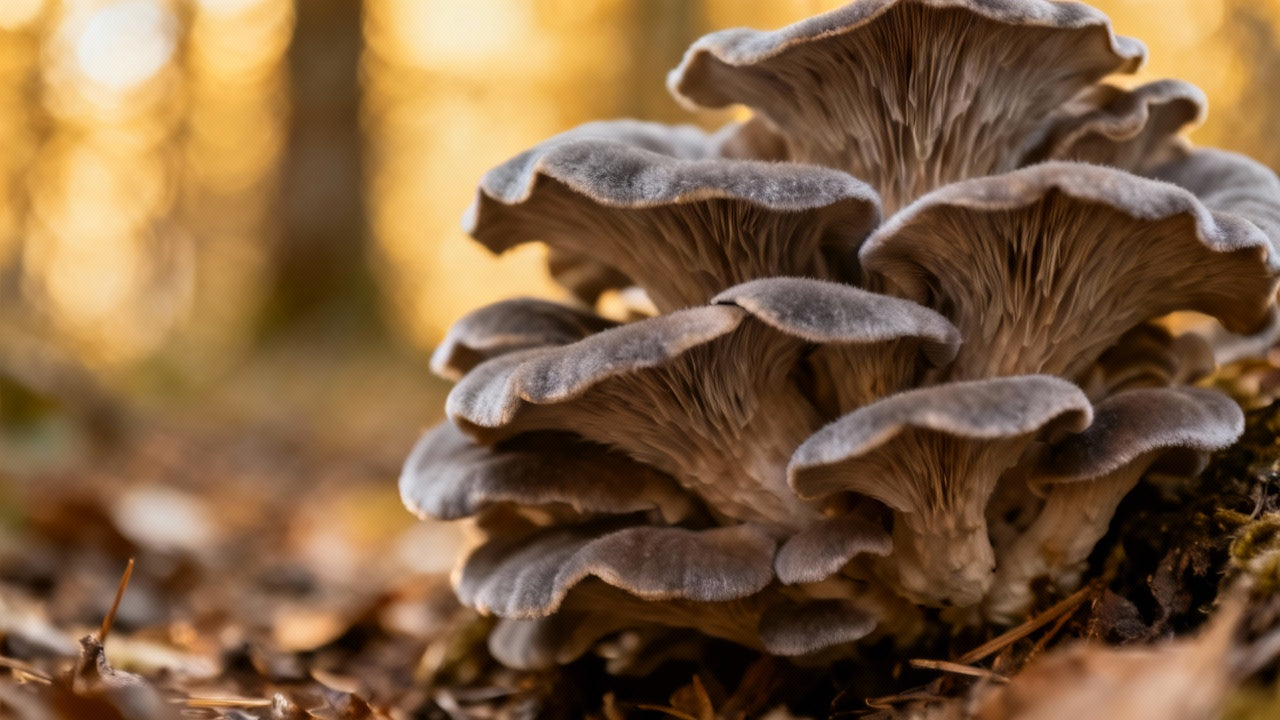
Share:
Beginner's Guide to Mushroom Growing Kits: Everything You Need for Your First Successful Harvest
Essential Tips for Indoor Greenhouse Gardening: Your Complete Guide to Mushroom Cultivation Success